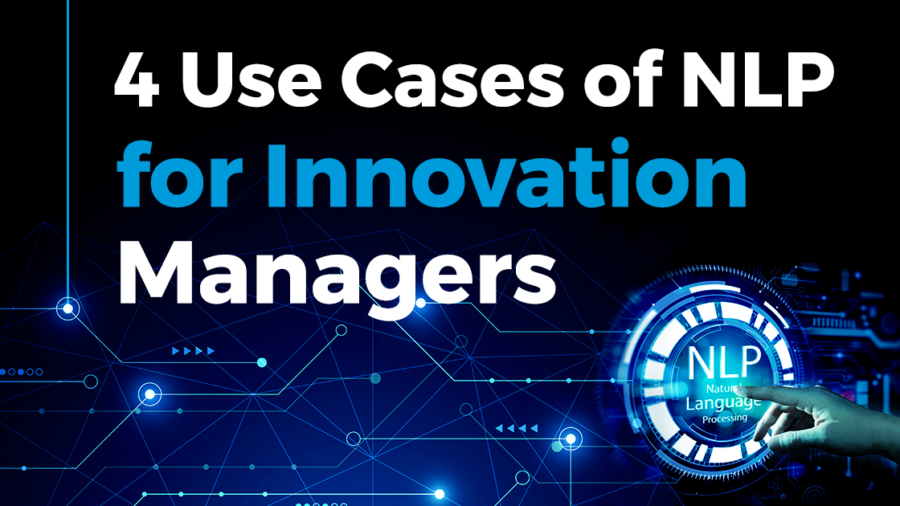Natural language processing (NLP) is a branch of artificial intelligence (AI) and computational linguistics. It enables digital systems to understand human speech and written text as well as respond in an appropriate manner. NLP techniques help innovation managers automate manual tasks related to text analysis, content categorization, and user insights from unstructured data. Let’s dive into this exciting topic!
How does NLP support Corporate Innovation?
1. Advancing Qualitative Research
Natural language processing is not an end-to-end solution for every problem in the innovation lifecycle. Rather, it is an enabler for solving a specific problem in each stage of the innovation process. In the first stage of the innovation lifecycle, the problem statement is to define the scope of the issue using different qualitative research techniques. For example, one can use focus groups, interviews, or surveys to understand customer pains and gains, product/service usage, or evaluation criteria. Here, NLP helps innovation managers like yourself by automating some of the tasks for data analysis such as survey questionnaires, focus group discussions, and user reviews.
2. Monitoring Customer Behavior
One of the most important aspects of innovation management is understanding customer behavior. This enables you to create new products and services catering to their needs. NLP can be used to capture unstructured data from different sources such as social media, emails, and user reviews. These data sources are available in the form of text and are difficult to analyze manually. NLP helps you to understand customer behavior and market trends by utilizing semantic and sentiment analysis. As a result, you are able to identify the positive or negative word choices of the customers. This data further lets you understand the preferences of the target group, thus, identifying potential opportunities for new products and services.
3. Automating Language Detection & Translation
Translation is a huge part of innovation management in today’s world. In the initial stage of innovation, one needs to localize the product or service. So, you have to translate the product or service description into different languages. Moreover, it is important to understand customer behavior in different geographies. However, translation is a time-consuming and expensive process. This is where NLP comes into play. Automated translation capabilities allow you to quickly translate the product description or service description into a different language. Besides that, NLP is useful for language detection. It detects the language of the text captured in unstructured data, which can be further used while analyzing social media data to understand customer behavior in different geographies.
4. Streamlining Ideation
Ideation forms the base for innovation management. It is the process of creating new ideas that later take the form of new products, services, or business models. The traditional process of ideation is time-consuming and it is also difficult to maintain an ideation flow. NLP improves ideation by automating manual tasks. For example, you can use NLP techniques such as word association to automate idea collection from your team members. Doing so will not only save time but will also give you the chance to know how many employees are having similar ideas. This allows you to analyze the ideas better.
Use NLP as an Enabler for Innovation Management
NLP comes in handy while solving many problems related to innovation management. This includes utilizing qualitative research techniques, understanding the market using unstructured data, finding user insights in text data, as well as automating repetitive tasks. What about you? Are you leveraging NLP for your company’s innovation activities? How has it improved the process? Get in touch & let us know!




![15 Top Market Intelligence Software Tools [2024] | StartUs Insights](https://www.startus-insights.com/wp-content/uploads/2024/03/Market-Intelligence-Software-SharedImg-StartUs-Insights-noresize-420x236.webp)
![13 Top Female-founded Startups Globally [2024] | StartUs Insights](https://www.startus-insights.com/wp-content/uploads/2024/03/Female-Founded-Startups-SharedImg-StartUs-Insights-noresize-420x236.webp)
